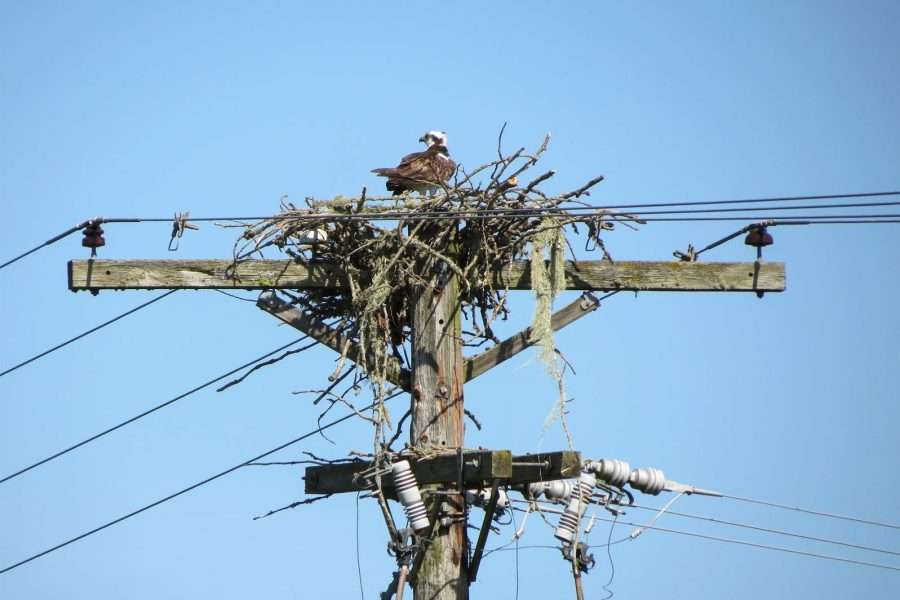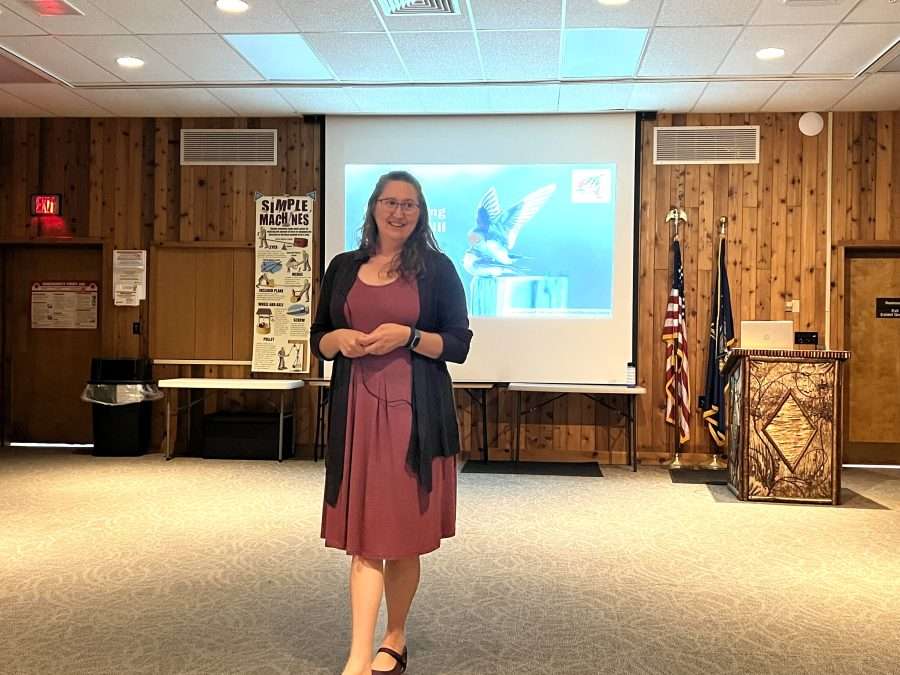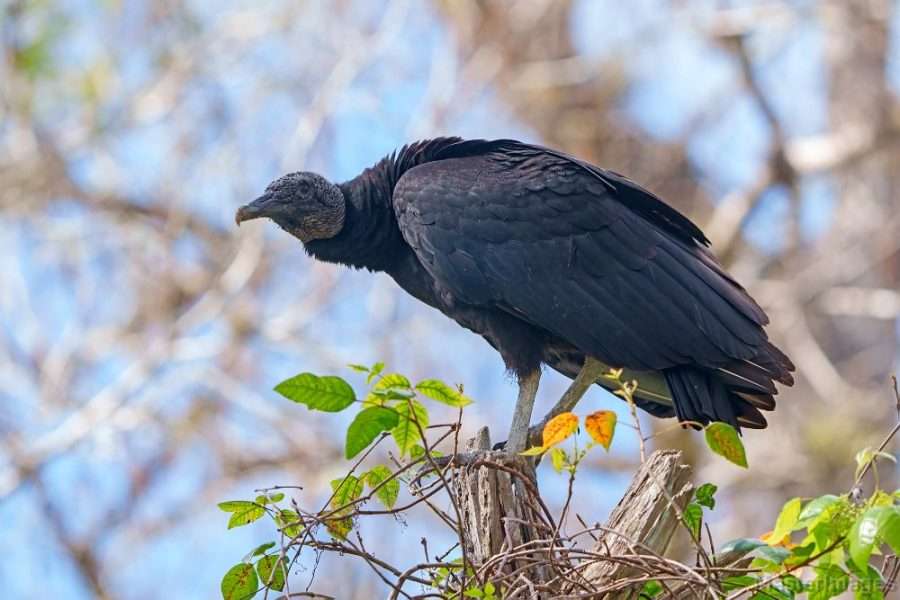
Initial data shows shifts in species
By Jak Krouse
New York is gaining osprey and losing grassland bird and aerial insectivore populations.
That’s according to Julie Hart, coordinator of the state’s third Breeding Bird Atlas. She unveiled findings during a presentation Saturday to birders at the Adirondack Experience museum. The event was part of the Adirondack Birding Festival, which drew some 100 participants from as far as California for guided tours and hikes in Hamilton County.
Using contributions from more than 3,500 volunteer birders, Hart has identified trends in the data. Such as the movement of red-bellied woodpecker and black vulture populations into the state and surges in raptor populations. “The increase of raptors such as ospreys is a really big conservation success story,” Hart said.
On the other hand, the population of grassland birds and aerial insectivores is plummeting.
“There is so much pressure on grassland habitat that the grassland birds have very little chance to survive,” Hart said.

How the atlas can be used
When it is finished, the bird atlas will serve as a tool for many of the conservation and development efforts across the state. Those building wind towers or solar arrays or developing land use atlas data to inform what they can and can’t do, according to Hart.
“It is the biggest and most detailed data set we have in the state of New York about any biological group, whether its plants or animals.” Hart said.
The atlases are the result of millions of recorded observations from birders of all skill levels. Funding for this atlas was federally administered by the Pittman-Robertson Act down to the New York Natural Heritage Program, which spearheads the atlas.
Due to its magnitude, the survey is done once every 20 years and has been conducted three times in the state of New York. The current survey began in 2020 and is expected to be completed in 2024. Birders are asked to explore the state in small blocks (about nine square miles) and report what species they hear and see on the atlas’s online portal.
“What you want to do with atlasing is once you hear those birds, you want to get binoculars on them and see what they’re doing. Follow them and find out if they’re building a nest. Are they carrying food?” Hart said. “You want to see all of these different behaviors.”

What’s left to do
Now, Hart is trying to fill in the missing pieces. “You can see, we aren’t quite done with the atlas,” Hart said, referring to empty blocks on a map of New York behind her. “We still have two more breeding seasons to go.”
In extreme cases, the project calls for hired technicians, or what Hart calls “blockbusters”, to travel to obscure locations to observe the birds, sometimes camping alone in the woods for weeks at a time. In northern New York especially, more work needs to be done.
“Most of the blocks around here [Hamilton County] still don’t have the barred owl. If you hear one, we would love to have that information,” Hart said. “Even if you’re a backyard birder or a new birder, there’s still a lot you can contribute.”
Hart’s speech was made possible through a grant from the Northern New York Audubon. Janet Mihuc, co-president of the Northern New York Audubon, introduced Hart. Mihuc was not surprised by the shifts in bird populations but did say they must be analyzed.
“I think the data is extremely important. This is the start to figuring out why bird populations are decreasing or increasing,” Mihuc said. “That can be a reason to target areas of the state for further research and conservation.”
Stay connected to the Adirondacks
The best way to keep on top of Adirondack Park issues,
community news and outdoor recreation
Subscribe to print/digital issues of Adirondack Explorer magazine,
delivered 7 times a year to your mailbox and/or inbox
"bird" - Google News
June 15, 2023 at 05:43PM
https://ift.tt/GC8vZB6
Bird census data revealed - Adirondack Explorer
"bird" - Google News
https://ift.tt/QExH3Id
https://ift.tt/h7wDMdY
Bagikan Berita Ini














0 Response to "Bird census data revealed - Adirondack Explorer"
Post a Comment